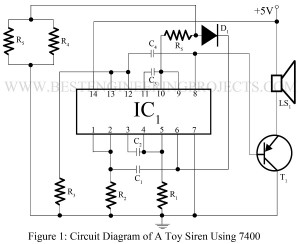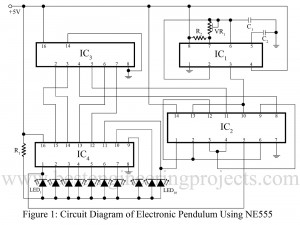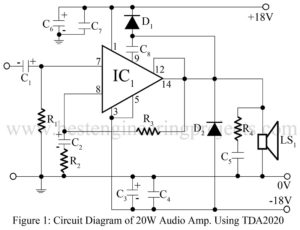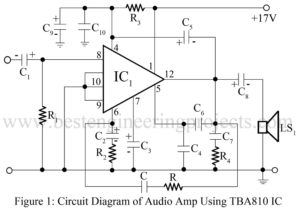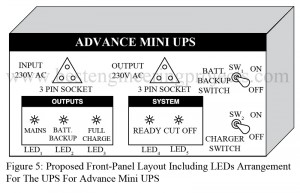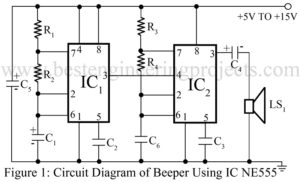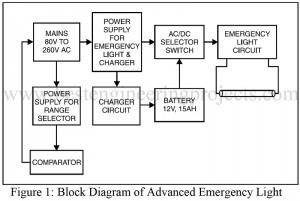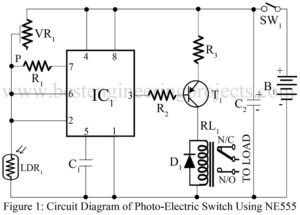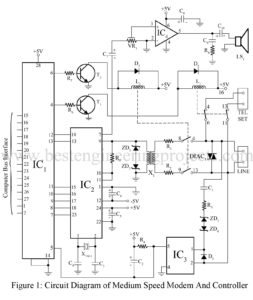Metal detector is a device which is used to detect metallic object like metal coins, iron ore, aluminum or silver and gold etc. Here, we teach you how to make a metal detector circuit with which you can hunt hidden treasure. This simple metal detector circuit can also be used to detect buried cable or concealed wiring. You can also checkout metal detector using arduino. Description of Metal Detector Circuit This metal detector circuit is designed using three NPN transistors, IF transformer, search coil and few passive component. The metal…
Read MoreToy Siren Circuit Using CD7400
Various sound generating project is posted in Alarm and Sound Generation Section. Now here is very simple an easy to construct electronic project called Toy Siren using CD7400 (IC1). Circuit Description of Toy Siren Circuit Using CD7400 The heart of the project toy siren circuit is quad-2-input NAND gate IC CD7400 (IC1). IC1 (CD7400) is a cheap easily available IC and it consist four NAND gate. Two NAND gate out of four is configured as low frequency oscillator and another two NAND gate as high frequency oscillator. When output of…
Read MoreElectronic Pendulum Using NE555
Here is a simple, cheap and vary interesting electronic pendulum. The project electronic pendulum using NE555 can be used in various other gadgets i.e. it can be used in digital clock for pendulum view. Circuit Description of Electronic Pendulum Using NE555: The circuit of electronic pendulum comprises a timer IC NE555 (IC1), CD7400 (IC2), 4-bit up-down counter IC CD74193 (IC3) and a BCD to decimal decoder IC 7442 (IC4). Timer IC NE555 (IC1) is configures in astable multivibrator mode and generate square wave. The frequency of square wave generating from…
Read More20W Audio Amplifier Using TDA2020
20W Audio Amplifier Using TDA2020 Here is one another circuit in the series of audio power amplifier. We had already posted audio amplifier using transistor (3Watt, 10Watt and 20Watt) and using IC (7Watt and 20Watt). We used here IC TDA2020 for designing audio amplifier circuit. TDA2020 (IC1) can deliver a maximum of 20Watt into a 4Ω loads. Like the TBA810, the TDA2020 also incorporated thermal shutdown, and output short-circuit protection. The input impedance of the circuit 20Watt audio amplifier using TDA2020 is determined by resistor R1 and sensitivity is determined…
Read More7W audio amplifier using TBA810
Here is another circuit in the series of audio power amplifiers. Previously we had already posted 3W and 20W audio amplifiers using transistors. Now we use an integrated circuit instead of transistors for designing audio amplifier circuits. By using IC TBA810 one can get a power output of 7W. The audio power amplifier featuring the TBA810 integrated circuit is shown in figure 1. This IC incorporated build-in-terminal shutdown, which automatically reduces the output in the event of sustained overloads or if the heat sinking arrangement is inadequate. We use a…
Read MoreAdvance Mini UPS Circuit
Mobile phones and small electronic gadgets are powered by AC mains using an AC adapter. In the event of mains failure, a low-capacity UPS will do the job satisfactorily. Here we design a simple, efficient, economical, and easy-to-construct UPS for mobile phone or telephone sets. The project advanced mini-UPS circuit can also be used for high power by changing a transformer with a high current rating so this circuit can be used as power backup for laptops also. We have already posted 350VA Offline UPS Circuit. Block Diagram of Advance…
Read MoreBeeper Circuit using Timer IC 555
Here is a beeper circuit employing two timer ICs NE555 (IC1 and IC2). The beeper circuit using timer IC NE555 can be used in various circuits that require an alarm or a ‘beeping’ signal. Description of Beeper Circuit Using Timer IC NE555 Timer IC1 is used here in astable mode in such a way that square-wave output at about 1 Hz is obtained. IC2 is also configure in astable mode, but it gives an output with about 1 kHz frequency. The output if IC1 (pin 3) is connected to ‘Reset’…
Read MoreAdvance Emergency Light Circuit
Many types of emergency light circuits are already available in the web world. Now, here is a unique circuit that glows a fluorescent tube at a voltage as low as 80 volts. This unique circuit Advance Emergency Light Circuit operates at a 12V battery and also charges the battery up to 12V, 15AH at a constant rate. Block Diagram of Advance Emergency Light Circuit The block diagram of the advanced emergency light circuit with charger unit is shown in figure 1. It consists of a power supply for emergency light,…
Read MorePhotoelectric switch using ne555
This circuit is of a highly sensitive photoelectric switch using NE555 timer IC. When the LDR1 is kept in light, the switch remains off, but when the light source is removed, the controller circuit gets switched on. This switch has vast application. With little modification, it can be used as a burglar alarm, a corridor visitors monitor, an automatic street lighting system, and as an automatic water tap system. Circuit Description of | Photoelectric switch using NE555 The NE555 timer functions here as a Schmitt trigger. A NE555 IC comprises two…
Read MoreMedium Speed Modem Using SC11004
Modems have been often been stand-alone, add-on devices for most data communications equipment. The recent integration of the complex functions a modem performs into a single chip has allowed manufacturers to economically build the modem right into the microcomputer or data terminal equipment. A circuit diagram of such a modem is shown in figure 1. Circuit Description of Medium Speed Modem Using SC11004 All of the signal processing functions needed for a full-duplex, 300/1200-b/s modem, including the FSK and PSK modulators and de-modulators, are integrated on a single chip. It includes…
Read More
